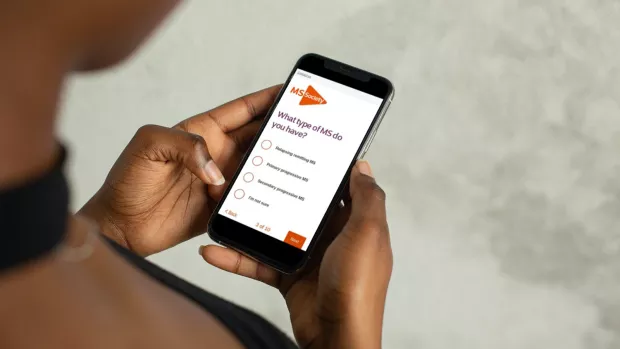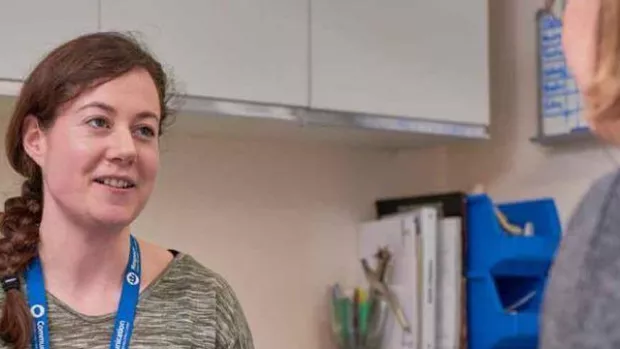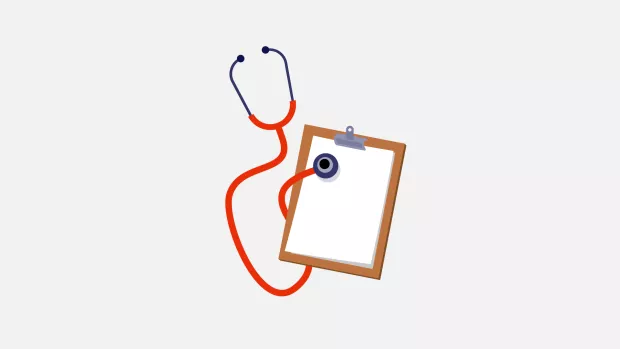
Ocrelizumab (Ocrevus)
Ocrelizumab is a disease modifying therapy (DMT) for active relapsing MS or early primary progressive MS. Its brand name is Ocrevus and you take it as an infusion.
Read the latest information about DMTs and coronavirus COVID-19
- Who can take ocrelizumab (Ocrevus)?
- How does ocrelizumab (Ocrevus) work?
- How well does ocrelizumab (Ocrevus) work?
- What are the side effects of ocrelizumab (Ocrevus)?
- Ocrelizumab (Ocrevus) and pregnancy, breastfeeding and contraception
Who can take ocrelizumab (Ocrevus)?
Ocrelizumab (Ocrevus) is used to treat ‘active’ relapsing MS. Its licence allows it to be used for early primary progressive MS too. It’s now recommended to be used on the NHS across the UK to treat both these types of MS.
Relapsing MS
Across the UK:
You can have ocrelizumab if you have 'active' relapsing MS. This means you’ve been having relapses, or there are new lesions on your MRI scans. It's also used to treat relapsing MS that is 'very active'. That means you're having relapses despite taking another DMT, or you're not on any DMT and you get frequent relapses or your scans show new lesions.
Primary progressive MS
If you have early primary progressive MS, then across the UK ocrelizumab is recommended for you on the NHS as long as:
- your MRI scans show signs of inflammation. In particular, you need a T1 MRI scan to show that you have enhancing lesions, meaning that inflammation has occurred recently or you need two or more T2 MRI scans that show you have new or growing lesions
- you have a score on the Expanded Disability Status Scale (EDSS) between 3.0 and 6.5. A score of 6.5 means you need two walking aids – such as canes or crutches – to walk 20 metres without having a rest. People aren’t given DMTs, including ocrelizumab, if they’ve been using a wheelchair for at least six months. This is because there’s not enough evidence at the moment that DMTs will make enough difference to their MS
- your MS started within the last 10 years (if your EDSS score is 5 or under) or the last 15 years (if your score is over 5). A score of 5 means disability gets in the way of your daily activities but you can walk without an aid for 200 metres.
What is ‘early’ primary progressive MS?
If you have primary progressive MS, your neurologist will decide if it’s ‘early’ or not based on how long you’ve had symptoms, and how much disability it’s caused you.
For primary progressive MS to be classed as ‘early’ - and for you to qualify to get ocrelizumab - your neurologist will follow this rule:
- If your EDSS score is over 5, your MS symptoms must not have started longer than 15 years ago.
- If your score is 5 or under, your symptoms must not have started longer than 10 years ago.
The EDSS measures how much MS affects you, focussing on how well you can walk.
Read more about the EDSS scale
How does ocrelizumab (Ocrevus) work?
Your immune system makes special cells that attack and kill viruses and bacteria. In MS these cells attack your nerves by mistake.
Ocrelizumab sticks to one type of these cells called B cells and helps kill them. This stops them getting into your brain and spinal cord where they would attack the myelin covering around your nerves. This stops inflammation and damage to the nerve.
You’re given this drug through a drip (an ‘infusion’) in hospital. You get the first dose as two separate infusions, two weeks apart. After that you have an infusion once every six months.
How well does ocrelizumab (Ocrevus) work?
MS drugs can be put into three groups based on how big their effect is against MS: ‘moderate, ‘good’ or ‘high’.
Relapsing MS
When this drug is used for relapsing MS its effect can be classed as ‘high’. This is based on how much it reduces relapses and slows down how fast people's disability gets worse.
Relapses dropped by:
46-47% compared to beta interferons
This means that in two trials, on average, people saw a 46-47% drop in the number of relapses they had. This was compared to people who took beta interferon, a standard treatment for MS.
Disability getting worse was slowed down by:
40% compared to beta interferons
This means that in two trials, on average, people saw a 40% drop in the risk of their disability getting worse. This was compared to people who took beta interferons.
Primary progressive MS
When ocrelizumab is used to treat primary progressive MS its effect is classed as ‘moderate’. This might not seem impressive but this is the first drug to work at all against primary progressive MS.
Disability getting worse was slowed down by:
25% compared to a placebo
This means that in a trial, on average, people saw a drop of around 25% in the risk of their disability getting worse. This was compared to people who took a placebo, a dummy treatment with no drug in it.
The drug also helped people walk better, slowed down how fast their brains were shrinking and made lesions in the brain smaller.
What are the side effects of ocrelizumab (Ocrevus)?
Compared to other DMTs, the risk of side effects, especially serious ones, doesn’t seem high. Overall ocrelizumab is somewhere in the middle, between the drugs with the highest risk of serious side effects and those that are seen as the safest.
In trials side effects weren’t any more serious than what you get with beta interferons (among the safest DMTs).
Up to four in ten people had at least one fairly mild, short-lived reaction during or after their infusion. These included a skin rash, fever, sore throat, itching or flushing (going red in the face).
You’re more likely to get some infections when taking this drug. These include colds and infections of the chest and skin, cold sores and other herpes infections.
In trials there were no serious side effects like the ones you see with other, hard-hitting DMTs. In trials more people taking this drug got cancer, especially breast cancer. But the number was still within the normal range. So it’s not clear if this is actually a side effect of the drug. The drug’s makers are monitoring this risk.
So far there have been no definite cases in people with MS of this drug causing the brain infection, progressive multifocal leukoencephalopathy (PML). But PML could be a risk because it’s happened in people taking this drug for other health problems.
You can read more about possible side effects and PML in our ocrelizumab (Ocrevus) factsheet (PDF, 527.45 KB)
Ocrelizumab (Ocrevus) and pregnancy, breastfeeding and contraception
Pregnancy
Ocrelizumab (Ocrevus) doesn’t have a licence to be used in pregnancy. But new UK guidelines in 2022 said it can be used if you want to get pregnant. You can be treated with this drug up until the point when you know you're pregnant. But it's preferable to wait three months between an infusion and trying to get pregnant. After you've become pregnant, you'll normally not have an infusion until after the baby has arrived. But in some cases a neurologist might recommend that someone has an infusion during their pregnancy.
If you do decide to stop this drug to have a baby, you should go back on it straight after the birth to cut your risk of a relapse.
Because this drug is relatively new, some neurologists are more cautious about using it with women who want to be pregnant than the guidelines that came out in 2022.
If you and your partner want to have a child, discuss this with your neurologist. If you think you’ve become pregnant, let your medical team know at once. Never stop your DMT without first getting their advice.
Breastfeeding
New UK guidelines in 2022 said that you should avoid having an infusion of ocrelizumab (Ocrevus) during the first week that you're breastfeeding. But that after that it’s safe to breastfeed while being treated with this drug and breastfeeding should be encouraged. Ask your medical team for their advice.
Contraception
The new 2022 ocrelizumab (Ocrevus) guidelines for UK neurologists said that previous advice about the need to use contraception to avoid pregnancy was too cautious. There are now no special recommendations about using contraception.





